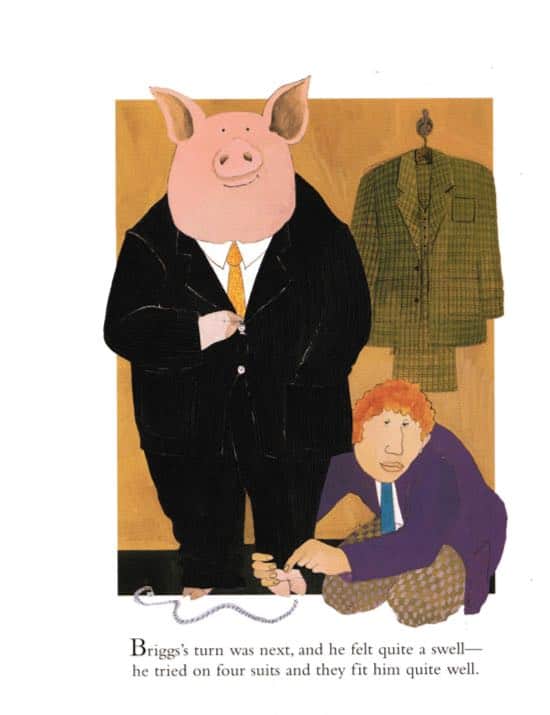Pig Tale is a 1973 picture book by Helen Oxenbury. I’ve already taken a close look at The Three Little Wolves and the Big Bad Pig, which is one of my favourite picturebooks of all time. That was written by Eugene Trivizas and illustrated by Helen Oxenbury, probably because she already had a reputation for being a great illustrator of pigs.

Even if you think you’ve never seen Helen Oxenbury’s work, you will have, at least if you’ve ever read a Walker book because it was Helen who came up with the Walker Books logo — you know the one? The bear carrying the candle.
Helen explains in this video that although she drew the bear walking in the left direction, in every logo, Walker Books has the bear walking in the right direction. This makes perfect sense when we consider the ‘unmarked’ position of picture book characters in the West — characters move right through the story because that is the direction of the page turn. Characters only face left when there’s some good reason to, such as when the illustrator wants to create some sort of block/stoppage in the story flow.
If I had to make a wild stab, I’d say Helen Oxenbury appreciates the simple things in life, and does not approve of a life built around the pursuit of money. Such is the ideology of this particular book, which she both wrote and illustrated.
It’s written in rhyming verse, with pretty good but not perfect scansion. A few reads through would afford the reader sufficient practice to get it right.
Although many picture books are still illustrated as if the story is set in the 1970s (with mothers in aprons and a disproportionate number of white nuclear families), this book is authentically of the 1970s.
STORY STRUCTURE OF PIG TALE
SHORTCOMING
There’s a word for it these days — these pigs have affluenza. We see them looking over their fence onto a road where a flash (1970s era) car zooms up the road. The homestead across the road has a swimming pool and a caravan — everything you could possibly want.
DESIRE
They want these flash new things for themselves.
OPPONENT
It’s tempting to say the opponent is ‘themselves’, but that’s never quite good enough to make a good story.
The pigs’ shortcoming is definitely exploited along this mythical journey as they encounter characters all too eager to take their money. But of course it’s true that these pigs really only have themselves to blame — the grovelling waiter and the car salesman and so on, they are the personifications (animal-i-fications?) of the pigs’ own shortcomings.

PLAN
The inciting incident is finding the treasure. After this, they plan to go spend it on luxurious things to improve their lives.
BIG STRUGGLE
The big struggle scene culminates in the food processor which throws food all over the kitchen.
ANAGNORISIS
These luxurious new things are making them unhappy.
NEW SITUATION
You knew this was going to happen when you started the story, didn’t you? The pigs return to the simple life on the farm.
